
Filled With Hope
by Alison Phillips
In a bustling metropolis with more than 46,000 homeless people, there’s a common thread. A man who used to seek shelter in a makeshift tent finds safety and aid in a tiny.home village. A struggling family gathers around a tasty meal in a hotel.turned.shelter. A dejected woman discovers job opportunities and dignity through a help center.
That thread is Hope.
Needs overwhelm the Los Angeles area. According to the Los Angeles Homeless Services Authority (LAHSA), an official count in January 2023 showed that homelessness is on the rise, increasing by 9 percent in L.A. County and by 10 percent in the city during the previous year.
Yet the staff at Citygate Network member Hope the Mission, with administrative offices in North Hills, California, boldly charge ahead in their mission to “prevent, reduce and eliminate poverty, hunger and homelessness.” With more than two dozen sites, the organization offers both immedi-ate assistance and long-term solutions to those facing the most hopeless of situations.
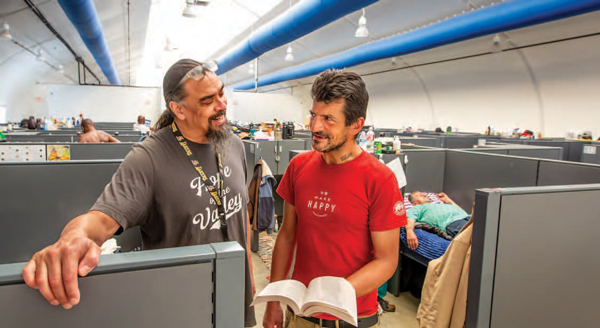 Hope the Mission’s extensive network of help includes tiny-home villages, family shelters, other interim housing, a transitional-age youth home, recovery programs, outreach teams, resource centers for employment and other assistance, and thrift stores. Each year, it provides 681,000 nights of shelter, more than two million hot meals, more than 645,000 hot showers, and thousands of medical and mental health referrals.
Hope the Mission’s extensive network of help includes tiny-home villages, family shelters, other interim housing, a transitional-age youth home, recovery programs, outreach teams, resource centers for employment and other assistance, and thrift stores. Each year, it provides 681,000 nights of shelter, more than two million hot meals, more than 645,000 hot showers, and thousands of medical and mental health referrals.
Just 14 years ago, Hope started small with a big vision.
In the beginning
Ken Craft, founder and CEO of Hope the Mission, was looking around at the needs in the area, and his heart was heavy. “There’s a lot more that could be done here in Los Angeles,” he thought. “I’m going to start a new rescue mission.” And so, in the summer of 2009, Ken, a former pastor and rescue mission staff member, gathered a board and served a weekday meal at San Pablo Lutheran Church in a low-income area. Soon the new team was serving meals three times weekly to people in need.
“If you will help me reach the community, I’ll let you use my facility,” the church’s pastor told Ken, who used the building’s kitchen to prepare hot meals. The church balcony, filled with boxes of food, served as the pantry.
“We just started serving meals, loving on people,” Ken said.
Known at the time as Hope of the Valley, the ministry continued to expand, moving into a nearby 26,000-square-foot building in 2010. Soon it would open a thrift store and an emergency shelter; offer showers, life-skills classes, and case-management services; and serve meals daily in a large courtyard. Mission staff even provided a place for pets.
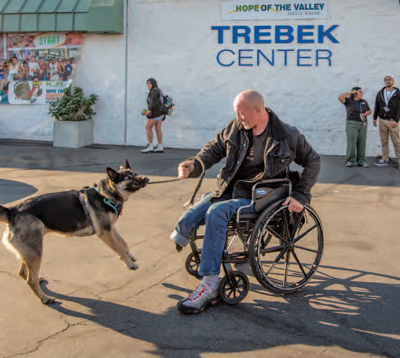 Meeting multiple people who were dealing with substance abuse issues compelled Ken to launch a men’s drug and alcohol recovery program in 2011. Thanks to a significant donor, the young organization purchased a home to host the program. Today, the John E. White House of Hope is a nine-month, faith-based recovery program.
Meeting multiple people who were dealing with substance abuse issues compelled Ken to launch a men’s drug and alcohol recovery program in 2011. Thanks to a significant donor, the young organization purchased a home to host the program. Today, the John E. White House of Hope is a nine-month, faith-based recovery program.
The organization also opened its first thrift store and took on a converted convent — formerly used for a different organization’s recovery program — to launch its first family shelter. A donor turned over the payments to Hope. A homebuilder helped transform the facility with renovations. Today, Hope the Mission uses the building as housing for a post-incarceration program.
A rough patch
Another outreach the organization brought to life was a recuperative care center in partnership with Kaiser Permanente. The first of its type in the San Fernando Valley, it would be a haven for people who were discharged from the hospital and had no home.
In 2016, the doors had opened but the hospitals were in no hurry to pay what they’d promised. At that time the mission budget was $2 million, and there was $1 million in accounts receivable, straining the organization and creating friction.
“We were at our lowest,” Ken said. “I thought the ship was going down.”
To rescue the ministry, the board wanted to cut ties with the recuperative care program. Hope was now dealing with a mountain of debt and had cash to last for only 10 days, said Rowan Vansleve, current president of Hope. And every single board member resigned in one day in 2017.
Ken contacted Rowan, who had worked with Ken at Hope in the past and had since swapped out ministry work for a higher-paying position. Rowan took the new position — and salary cut — and came in with this attitude: “I’m willing to roll up my sleeves!”
“One of the first things we looked at was the cultural side,” Rowan said. “Hope had lost a little bit of its ‘hopeiness.’”
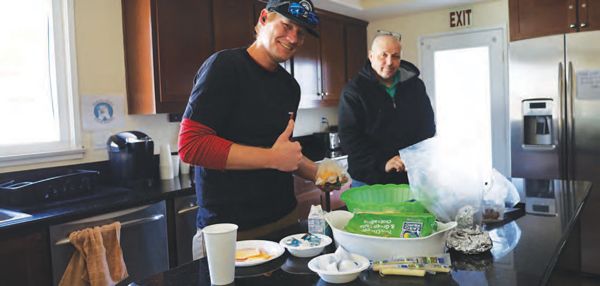 Ken focused heavily on fundraising, forging connections with banks and donors. The men wanted to build a team of people who could ask for money to strengthen Hope.
Ken focused heavily on fundraising, forging connections with banks and donors. The men wanted to build a team of people who could ask for money to strengthen Hope.
Even though the organization was in crisis, Ken had not lost his passion for outreach. He was inspired to expand again, serving transitional-age youth (ages 18 to 24) in a 38-bed shelter, The Landing. During this time, Ken’s drive brought a constant stream of fresh programs and positivity, Rowan said.
“We’d turned the corner,” Rowan said.
While their new leadership partnership and hours of hard work had put them on the path to greater stability, it was another crisis — COVID19 — that would give Hope the boost it needed to experience substantial growth.
City partnerships
In the Los Angeles area, homelessness has been a serious issue for decades, but the government didn’t intervene until fairly recently. In 2016 and 2017, voters approved $1.2 billion to create 10,000 housing units and then designated millions for helping the homeless with a decade of services.
But by 2018, nothing had changed — except that the number of homeless people was increasing.
Eric Garcetti, then mayor of Los Angeles, declared a shelter emergency.
“That was the fertile soil that began to change things,” Ken said.
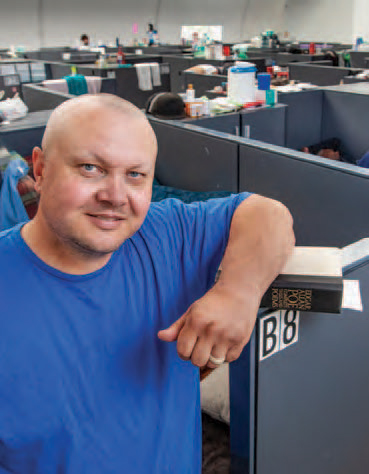 Zoning regulations had limited where facilities to help people in need could operate, and buildings were typically only permitted to have a maximum of 30 beds. Government policy was preventing private organizations from implementing real solutions. The emergency declaration allowed the City of Los Angeles to set up shelters and other facilities in any zone, as long as the city owned or leased the land.
Zoning regulations had limited where facilities to help people in need could operate, and buildings were typically only permitted to have a maximum of 30 beds. Government policy was preventing private organizations from implementing real solutions. The emergency declaration allowed the City of Los Angeles to set up shelters and other facilities in any zone, as long as the city owned or leased the land.
As the political winds shifted in favor of help for the homeless, the LA Alliance for Human Rights brought a lawsuit against the City and County of Los Angeles in March of 2020. In light of L.A. hosting the upcoming World Cup (2026) and the Summer Olympics (2028), government leaders had been motivated to clean up the streets
— at the expense of homeless people in temporary dwellings. A judge declared that the “no-camping” laws could not be enforced until more beds for the needy were available.
“That basically became the marching orders,” Ken said. “If any council district wanted to have any type of enforcement, they had to come up with beds for 60 percent of their council district’s previous year’s [official] homeless count.”
The mayor’s emergency declaration and the lawsuit motivated government leaders to work toward sheltering the homeless. However, many private agencies in the area only endorsed permanent housing and didn’t believe shelters should be a bridge from homelessness to stability and affordable residences. Ken and Rowan disagreed.
In the Los Angeles area, homelessness has been a serious issue for decades, but the government didn’t intervene until fairly recently. By 2018, nothing had changed — except that the number of homeless people was increasing.
“The streets cannot be the waiting room for permanent housing,” Ken said.
When city officials sought out partners for interim housing projects, they found Hope to be supportive, and eventually they partnered with the mission on tiny-home villages and other lifesaving facilities.
Hope in a crisis
In 2020, the COVID-19 crisis prompted the City of Los Angeles to declare another emergency and to shelter homeless people in park and recreation centers.
The shelters were 24-hour facilities hosting about 100 people each, and Hope didn’t have plentiful staff at the time. Still the mission’s leaders eagerly said “yes” to heading up two shelters. As other agencies turned down the opportunity to help, the city called on Hope to oversee a total of eight sites, including food service, security, case management, and more for each one. This was the beginning of a new relationship with the city — a genuine partnership.
“We built this reputation, in the moment of crisis, of saying ‘yes.’ They knew they could count on Hope,” Ken said. “They saw that we can deliver; we can do what we say we’re going to do.”
In one 10-month period during the pandemic, the mission was able to serve with 1,000 new beds in six locations.
 Currently, Hope the Mission is partnering with local government on numerous ventures, receiving $15 million in funding from local government each year. These include seven tiny-home villages, three large interim housing shelters, three hotel facilities, an access center (offering job assistance, clothing, and more), and a navigation center (a starting point for finding housing and jobs). Three outreach teams visit the homeless beneath their tarps, pallets, and tents to offer aid.
Currently, Hope the Mission is partnering with local government on numerous ventures, receiving $15 million in funding from local government each year. These include seven tiny-home villages, three large interim housing shelters, three hotel facilities, an access center (offering job assistance, clothing, and more), and a navigation center (a starting point for finding housing and jobs). Three outreach teams visit the homeless beneath their tarps, pallets, and tents to offer aid.
“We’re one of the most recognized brands in the city,” Rowan said, citing a recent study of area organizations’ brands.
Hope’s leaders are also working on setting up several properties through L.A. County’s Home-key initiative. According to the L.A. County government, the program seeks to convert properties — mostly hotels and motels — into interim and permanent housing for people experiencing homelessness.
“There’s a moral imperative to get people off the streets,” Rowan said. “It’s not about the politics. Let’s love people.”
Today Hope the Mission’s budget is about $80 million, and leaders expect it to be around $100 million in 2024, based on current growth. Its many sites offer about 2,500 beds to those in need, Ken said, and new facilities open regularly. In 2021 alone, Hope opened its fifth thrift store and launched the first tiny-home village in the L.A. area — as well as five additional tiny-home sites.
“I’m in the middle of God’s work,” Rowan said. “It’s phenomenal.”
There are advantages to being a multisite ministry.
“You put all that in one location, and you’re going to really upset your neighbors,” Ken said. “But by having 100 [beds] here, 200 here, 75 here … it makes it more palatable for communities to buy in to it.”
Even still, Hope has experienced strong community resistance at most of its outreach facilities. Neighbors may fear that property values will shrink or that the formerly homeless people will bring unhealthy habits and substances into the neighborhood. At one location, a couple hundred upset people backed Ken against a wall.
To ease neighbors’ concerns, Hope’s leaders happily answer questions and give tours of newly opened facilities.
“They get to know us and realize we really do run a good program, and that those fears are unfounded,” Ken said, adding that it is helpful that Hope the Mission has a good record of success and strong support from local politicians. “We rewrite the story in a positive way.”
Essential staff
More than 600 team members keep the numerous area sites running with efficiency and compassion. About 1,000 volunteers assist with various events and activities throughout the year. Numerous staff members were formerly in Hope the Mission programs.
Chantel Lopez went through a rough period of poverty with family members, including her sister, Brenda Lopez; mom; two daughters; and nephew; and then lived in one of Hope’s family shelters for nine months.
The owner of Beachbody, a major mission donor, handed the family a Christmas card containing a $100,000 check for one year’s worth of rent. The gift also included a van to provide transportation for her nephew, who has special medical needs, plus other essentials such as groceries, clothes, blankets, furniture, gas, and vehicle maintenance.
“It was unbelievable,” Chantel said. They moved into their new home in April 2019. “We were excited … Our kids were happy because they finally had a home to call their own.”
Today Chantel serves as receptionist at Hope’s headquarters and Brenda is the manager of its North Hollywood Navigation Center, the first of its kind in L.A. It features storage space for homeless individuals, a computer lab, showers, job assistance, access to case workers and more.
“We consider ourselves incredibly thankful and lucky to have been supported by and [be a] part of Hope the Mission, first as clients and now as employees,” Brenda wrote in the mission’s newsletter. “Hope … gave us the opportunity to feel safe, to feel supported and to feel at home.”
As other agencies turned down the opportunity to help, the city called on Hope to oversee a total of eight sites, including food service, security, case management, and more for each one. This was the beginning of a new relationship with the city — a genuine partnership.
Ken and Rowan said they’ve offered opportunities to Hope team members who have thenflourished as leaders, taking on weighty responsibilities in management, finance, and other key areas at the very large mission.
“A lot of leaders are emerging and growing and thriving in their sphere of influence, and I think that’s what makes a great organization,” Ken said.
Staff training can be a challenge, Rowan said. While all-staff meetings aren’t realistic because of the number of people and the 24-hour nature of many facilities, large staff events such as barbecue dinners are helpful to create connections.
“We have a huge need, and I feel a huge responsibility. We need to be the solution. Let’s do everything we can to try to bring people indoors and to try to solve this humanitarian crisis.” —Ken Croft
“It’s a lot of people. Your problems come with managing people. There are a lot of moving parts and systems that aren’t fully developed yet,” Ken said. “We have to work twice as hard to maintain closeness and relationships.”
Because of Ken, Rowan said, staff members are “being empowered and treated with dignity.”
Flexibility focus
While Hope’s size brings some challenges, such as managing staff and massive fundraising efforts, leaders try to focus on the positive.
“What drives us is the need,” Ken said. “I don’t spend a whole lot of time looking back and saying, ‘Wow, look at what we’ve done.’ I spend more time looking at what we have to do.”
Still, managing a large organization with equally large risks can be daunting.
“It’s a massive agency, and no one’s ever done this before,” Rowan said.
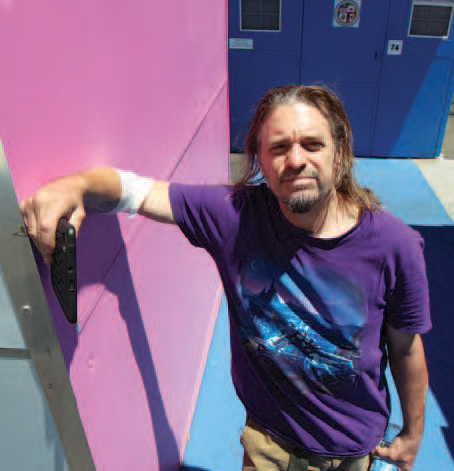 Ken added, “We’re kind of figuring it out as we go … as we continue to respond to the needs in the community.”
Ken added, “We’re kind of figuring it out as we go … as we continue to respond to the needs in the community.”
Rather than spend time on strategic planning as many missions do, Ken and Rowan balance preparation for future days with adapting to new opportunities as needed.
“We have a calendar for the next 18 months,” Rowan said, adding that the organization is “too dynamic” to schedule for years in advance.
Scrawled on the calendar are creative ideas and plans, but these are flexible so the mission doesn’t miss opportunities such as the city wishing to partner on a new project or a corporation offering a large donation for a facility. If new innovations or technologies become available, leaders aim to be open-minded to try fresh approaches.
“We continue to be very opportunistic,” Ken said. “It’s almost an exercise in futility to try to strategize exactly what’s going to happen because there are opportunities that present themselves continually.”
When Hope the Mission’s leaders come upon a new opportunity, they ask if it is aligned with the mission’s goals and if appropriate resources are available. Fortunately, Ken said, since the organization is relatively young, it doesn’t have “a lot of sacred cows” that might stand in the way of progress.
For example, when tiny homes first became available, many outreach organizations laughed at their structure and potential, but Hope’s leaders simply asked, “Why not?”
“Instead of trying to have too much clarity, we really try to approach [the future] with an open hand and open heart,” Ken says. “We have a huge need, and I feel a huge responsibility. We need to be the solution. Let’s do everything we can to try to bring people indoors and to try to solve this humanitarian crisis.”
Looking ahead
While future plans are malleable, “We have our dreams,” Rowan said. One desire is to expand further into other geographic areas. Other goals are serving more people post-incarceration with housing, offering housing for immigrants, and serving more specific groups, such as elderly women.
Rowan and Ken believe that for rescue mission work to continue around the country, creative methods and new partnerships are vital.
“Mergers and acquisi-tions are going to have to be openly talked about,” Rowan said. “Different types of partnerships — whether it’s with the government like we’re doing
or with other groups — and different modes of shelter will have to be allowable.”
For a rescue mission looking to expand or enrich its outreach, Ken advises finding better and different ways of serving without comparing the ministry to any other similar organizations.
“Be willing to ask the hard questions: ‘Why do we do this? Why do we not do this? Is there a better way? Is there a new way?’” he said. “The longer you are in a particular situation or setting, it’s easy to stop asking those difficult questions and just accept your norms. Sometimes tradition is not our friend.”
While Hope the Mission leaders are constantly open to shifting to new projects and seeking out fresh approaches, their values don’t waver.
“We believe in the dignity, the value and the worth of every human being, and we don’t believe that anybody is too far gone that God cannot redeem and restore,” Ken said. “That’s the premise we stand on.”
 Alison, lives in West Texas with her husband, two sons, and two daughters. Formerly, she lived in Colorado and edited publications for Citygate Network and for the Christian Camp and Conference Association. Alison holds a bachelor of science degree in journalism.
Alison, lives in West Texas with her husband, two sons, and two daughters. Formerly, she lived in Colorado and edited publications for Citygate Network and for the Christian Camp and Conference Association. Alison holds a bachelor of science degree in journalism.
Photos by Greg Schneider, provided by Hope the Mission
To read more articles like this from our bi-monthly members-only magazine Instigate email Aly Zadurowicz about membership today.
This article originally appeared in the November/December 2023 issue of INSTIGATE magazine. © Citygate Network, All rights reserved. Please email editor@citygatenetwork.org for additional permissions.